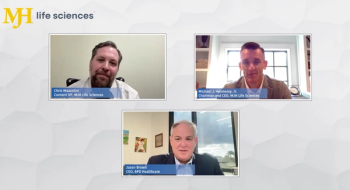
The Clinical Divide: Physician Burnout
How many physicians do you have at your institution? If it's a hundred and half are burned out, you might be leaving $50 million and a slew of would-be better patient outcomes on the table.
Healthcare's problems run the gamut from outdated payment models to frustrating tech to a patient population that's plagued with chronic preventable disease. At first, these may seem like disparate issues, but upon closer inspection, we find there's a single, pervasive notion that's woven into the very fabric of each and every one of our healthcare woes: The physicians we are counting on to fix healthcare problems are burned out. Suicide rates among doctors at all stages of their careers are at an all-time high.
Welcome to the Clinical Divide. I'm Dr. Kevin Campbell. I'm a Duke-trained cardiologist and CEO of the health data startup PaceMate. Every week, this Healthcare Analytics News video series examines tech and medicine's top news. I try to bring you the views that can help physicians and healthcare executives bridge the Clinical Divide.
Let's first start talking about physician burnout. As the days go by, the headlines pile up. Let's read a few. "More Than Half of Physicians are Burned Out or Depressed," according to one national survey. "Physician Burnout Taking Center Stage," reads the Huffington Post. "Physician Burnout Has Major Consequences for Patient Health," according to MD Magazine.
And C-suites, here's what might get your ears to perk up: "How Much Is Physician Burnout Costing Your Organization?" According to the American Medical Association, it's a lot.
Let's dive into that last issue, because, let's face it. The sacred bottom line of our nation's hospital systems has a whole lot to do with why physicians are burned out to begin with. In the relentless pursuit of improved billing practices, better cost savings and financial growth, hospital administrators are really throwing doctors under the bus.
Think about one of the most obvious culprits: The electronic medical record (EMR). In my opinion, EMRs are a wolf in sheep's clothing whose true purpose is improved billing capture. Doctors have become data entry specialists and billing coders, rather than healers and thinkers.
As one New York times story reads, "EMRs were sold to us as a means to ease workflow and ensure patient safety." Absolutely nothing could be further from the truth. They make a doctor's day feel more robotic and dehumanized, and separate us from meaningful patient relationships.
EMRs are unwieldy and increase physician work. Many doctors take home EMR work every single night. This cuts into precious family time. Guess what follows? Burned out physicians, and really unhappy patients.
It's hard to believe that our administrators are neglecting to tackle this issue. Crunch the numbers and you'll arrive at the true bottom line. Physician wellbeing translates to patient wellbeing, which translates to hospital wellbeing, which translates to community wellbeing.
And if that's not good enough, let me put it like this: Physician wellbeing is good for business. According to one estimate, for the average health system, physician burnout can cost half a million to a million dollars per doctor. This estimate includes the cost of recruitment, sign on, plus lost billings and onboarding costs for replacement physicians.
Beyond the financials, look at the cost of lives. Many young doctors are committing suicide, and this is simply unacceptable. Suicide rates among physicians far outpace those of age and gender matched controls in the U.S. today.
So how many physicians do you have at your institution? If it's a hundred and half are burned out, you might be leaving $50 million and a slew of would-be better patient outcomes on the table. You're putting physician families and real people at risk.
It's now time to bridge the Clinical Divide between physicians and C-suites, and to really make physician wellbeing a priority of your business strategy. The payoff goes well beyond the bottom line. By working together, administrators and doctors can prevent tragedy. And the first step is listening to one another. Getting a better understanding of the pressures that each of us face -- physician, hospital administrator, and healthcare executive.
Once we have an appreciation for each other's challenges, only then can we move forward with a solution. Our patients and the very fabric of our healthcare system in the US today depends on this collaboration happening now.
Thank you for joining me for this episode of the Clinical Divide. Until next week, I'm Dr. Kevin Campbell, for Healthcare Analytics News.
Navigate the digital transformation with confidence. Register for our newsletter .
More Episodes of The Clinical Divide:



































